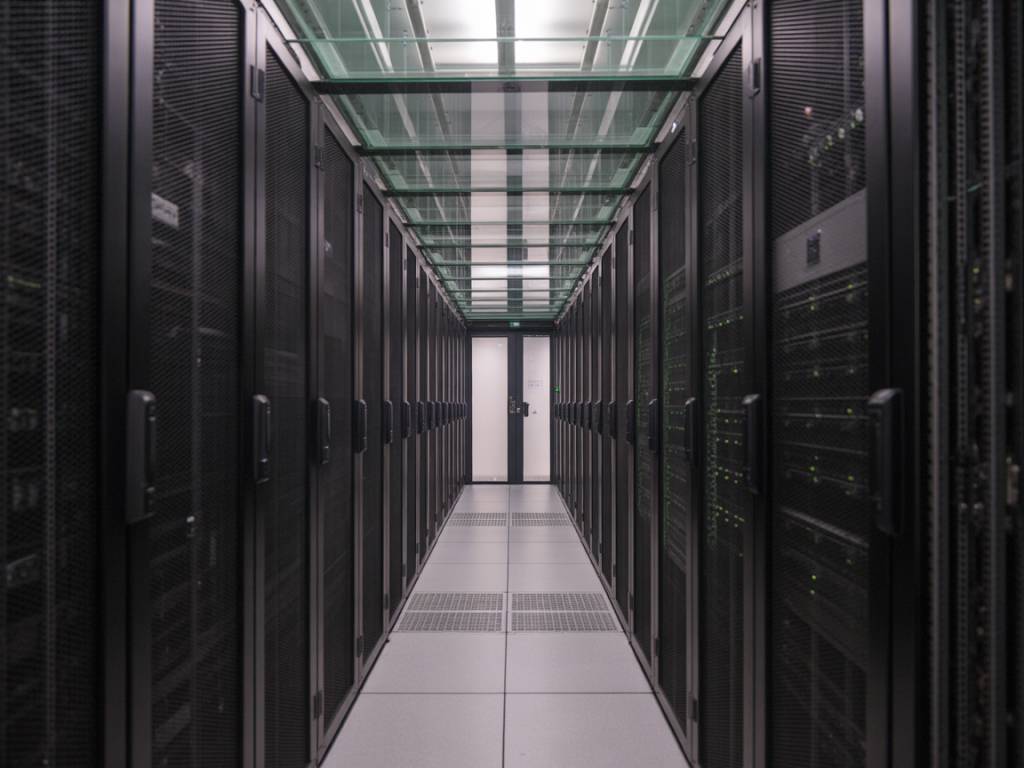The hidden environmental cost of data centers
Behind every search query, video stream, online payment or AI-generated image, a data center is working in the background. These vast facilities, packed with servers, storage systems and cooling equipment, form the backbone of the global digital economy. Yet their ecological impact is often underestimated, partly because the infrastructure is invisible to most users.
As internet traffic, cloud computing and artificial intelligence workloads grow exponentially, the energy and resource footprint of data centers is expanding with them. Understanding the ecological impact of data centers, and the ways to “green” digital infrastructure, has become a central issue in climate and energy policy.
Today, data centers account for an estimated 1–1.5% of global electricity consumption, with some projections suggesting this could climb significantly if demand continues on its current trajectory. Their environmental impact extends far beyond power use, encompassing water consumption, greenhouse gas emissions, land use and electronic waste. The challenge is not only to make individual data centers more efficient, but to rethink how the entire digital ecosystem is designed, powered and cooled.
How data centers consume energy
At the core of a data center’s ecological impact is its demand for electricity. Power is required not only for running servers and storage devices, but also for networking equipment, cooling systems, backup power units and lighting. In high-density facilities, cooling can account for 30–40% of total electricity use.
The energy efficiency of data centers is often measured using Power Usage Effectiveness (PUE), a ratio comparing total facility power to the energy consumed directly by IT equipment. A PUE of 1.0 would mean that every kilowatt-hour (kWh) goes to computing, with no overhead. In practice, older or poorly designed data centers can have PUE values above 2.0, while modern hyperscale facilities strive for values close to 1.1 or lower.
Despite impressive efficiency gains in recent years, the rapid growth of cloud computing, streaming and AI has offset many of these improvements. High-performance computing clusters and large-scale machine learning models are particularly energy-intensive, with training runs sometimes consuming as much electricity as hundreds of households use in a year.
The environmental impact of this electricity use depends heavily on the local energy mix. A data center powered primarily by coal or gas will have a much higher carbon footprint than one connected to a grid dominated by renewable energy. This disparity has made the geographic location and energy sourcing strategy of data centers a key climate issue.
Water use and thermal stress on ecosystems
Beyond electricity, many data centers rely on large volumes of water to dissipate heat. Evaporative cooling systems, cooling towers and some chiller technologies can require millions of liters of freshwater per day for a single large facility, especially in hot climates.
This water footprint has several ecological dimensions:
- Freshwater withdrawal: Intensive water use can put pressure on local water resources, especially in regions already facing scarcity or seasonal drought.
- Thermal pollution: When data centers use once-through cooling and discharge warmer water into rivers, lakes or coastal zones, they may alter local ecosystems and affect aquatic species sensitive to temperature changes.
- Indirect impacts on agriculture and communities: In water-stressed areas, competition between industrial uses like data centers and traditional sectors such as agriculture or domestic supply can generate social and environmental tensions.
To reduce this impact, some operators are transitioning to air-cooled designs, using reclaimed or non-potable water, or locating facilities in cooler climates where mechanical cooling loads are lower. Yet these solutions involve trade-offs, including higher energy use for air-based cooling or increased infrastructure for water treatment and transport.
Greenhouse gas emissions and the carbon footprint of digital infrastructure
The carbon footprint of data centers is shaped by two primary factors: operational emissions from electricity and fuel use, and embodied emissions from the manufacture, transport and disposal of equipment and building materials.
Operational emissions are driven by the carbon intensity of the local power grid and any on-site fuel consumption, such as diesel for backup generators. Even in regions with growing shares of wind and solar, many data centers still rely on fossil-fuel-based grids, particularly during peak demand or when renewable output is low.
Embodied emissions arise from producing servers, storage devices, networking hardware, batteries, cooling systems and the buildings themselves. Mining and processing metals, manufacturing semiconductors and producing construction materials like steel and concrete all carry significant carbon costs. While these emissions are often less visible than energy consumption, they can represent a substantial portion of a facility’s total climate impact over its lifetime.
Leading cloud and colocation providers increasingly publish carbon accounting data, set science-based targets and procure renewable energy through power purchase agreements (PPAs). However, the rapid growth of data traffic and new AI workloads raises questions about whether efficiency and decarbonization initiatives are keeping pace with demand.
Land use, siting conflicts and local impacts
Large data centers require substantial land, grid connections and sometimes access to water or fiber backbones. The siting of these facilities can lead to conflicts over land use, especially when they are located near residential areas, farmland or ecologically sensitive zones.
Key local impacts include:
- Land transformation: Turning greenfield sites into industrial zones can fragment habitats, reduce biodiversity and alter local hydrology.
- Noise and visual impact: Cooling fans, backup generators and industrial-scale buildings can generate noise pollution and change the character of rural or peri-urban landscapes.
- Grid stress: High-capacity data centers can strain local electricity networks, potentially triggering new fossil-based power investments if grid planning does not prioritize renewables and storage.
Some jurisdictions have begun to regulate the expansion of data centers, imposing stricter environmental criteria, limiting clustering in specific regions or requiring higher standards for energy and water efficiency.
Strategies to green data center infrastructure
Greening data centers involves a combination of technological innovation, smart design and robust policy frameworks. No single measure is sufficient; instead, operators and regulators must pursue a portfolio of solutions.
Key strategies include:
- Improving energy efficiency: Optimizing server utilization through virtualization and workload management, using energy-efficient processors, adopting advanced cooling systems such as free air cooling and liquid cooling, and continuously monitoring performance to identify inefficiencies.
- Transitioning to renewable energy: Signing long-term renewable PPAs, investing in on-site solar or wind generation where possible, and matching energy use with hourly renewable supply rather than annual averages to better align with real-time grid conditions.
- Reusing waste heat: Capturing and distributing excess heat from data centers to nearby district heating networks, greenhouses or industrial facilities, turning a by-product into a resource.
- Reducing water consumption: Deploying water-efficient cooling technologies, prioritizing air cooling in suitable climates, using reclaimed water and implementing strict water accounting and reporting practices.
- Designing for circularity: Extending the lifespan of servers and components, enabling repair and refurbishment, and supporting robust take-back and recycling programs for electronic waste.
Advanced digital tools can also play a role. Artificial intelligence and machine learning models applied to facility management can dynamically optimize cooling, balance loads across servers and predict equipment failures, further lowering energy consumption and improving resilience.
The role of regulation, standards and transparency
Policy frameworks and industry standards are increasingly shaping how data centers address their ecological footprint. Governments in regions such as the European Union, North America and parts of Asia are introducing regulations on energy efficiency, reporting requirements and, in some cases, explicit climate targets for digital infrastructure.
Emerging frameworks include energy performance benchmarks, mandatory disclosure of PUE and water usage effectiveness (WUE), and incentives for integrating renewable energy. Voluntary initiatives and certification schemes, such as green building labels or data center sustainability standards, are also pushing operators to adopt best practices.
Transparency is critical. Without clear and comparable reporting on energy use, emissions, water consumption and hardware lifecycles, it is difficult for policymakers, customers and local communities to assess the real impact of a facility. More granular data, including hourly carbon intensity, location-based emissions and detailed resource accounting, can help steer both corporate and public decisions.
Rethinking digital demand and user behavior
While much attention focuses on data center operators, the volume and nature of digital demand is equally important. Streaming ultra-high-definition video, storing multiple redundant copies of data, and training increasingly large AI models all contribute to the growth of digital infrastructure.
There is growing debate over how to balance innovation with resource constraints. Potential approaches include:
- Data minimization: Encouraging organizations to store only what is necessary, adopt efficient data retention policies and reduce duplication of content across platforms.
- Designing efficient software: Promoting “green coding” practices that optimize algorithms, reduce computational complexity and limit unnecessary background processes in applications and services.
- Smarter use of AI: Prioritizing models and applications that deliver clear social or environmental benefits, optimizing model architectures for efficiency and exploring hardware designed specifically for low-energy AI inference.
End users, from businesses to individual consumers, have a role to play in demanding more sustainable cloud, hosting and streaming services, and in making informed choices about the digital tools they use daily.
Towards a sustainable digital ecosystem
Data centers are essential to the functioning of the modern world, enabling healthcare systems, scientific research, e-commerce, communications and public services. Yet their ecological impact cannot be ignored. The challenge is not to slow digital innovation, but to align it with planetary boundaries.
Greening global digital infrastructure will require coordinated action across the entire value chain: chip designers, hardware manufacturers, cloud providers, utilities, regulators and users. It involves shifting to low-carbon energy, rethinking cooling and water strategies, embracing circular economy principles and questioning the assumption that digital growth must be unlimited.
If these transformations are embraced, data centers could evolve from silent contributors to environmental degradation into active players in the energy transition, supporting grid stability, enabling waste heat recovery and showcasing high-efficiency, low-impact industrial design. The future of the digital world depends on how quickly and effectively this shift is made.




